There is only one way to meet the Wana tribe. You must walk into their rugged territory. Arrangements should be made in advance because the Wana are wanderers and their territory is vast. They pack up and move when the village council decides the time is right based on agricultural crop cycles. Because of this, tracking them down is not always easy.

I met Yonatan, a national park ranger who offered to guide us into the Morowali National Park, in a most unlikely place. We were just off the coast of Central Sulawesi. The meeting took place on our traditional pinisi boat charter. The prospect of an encounter with this isolated local tribe was irresistible, and so we made arrangements to take the trip into Wana territory the following morning.
The morning was charged with an Indiana Jones type vibe as the captain and the crew of the Ombak Putih, our boat charter, had never met the tribal forest dwellers. Suffice to say there was a lot of excitement and eager anticipation as we located the inlet to Wano River, travelled upriver in our Zodiacs, and then left them to make our way inland to Wana territory.
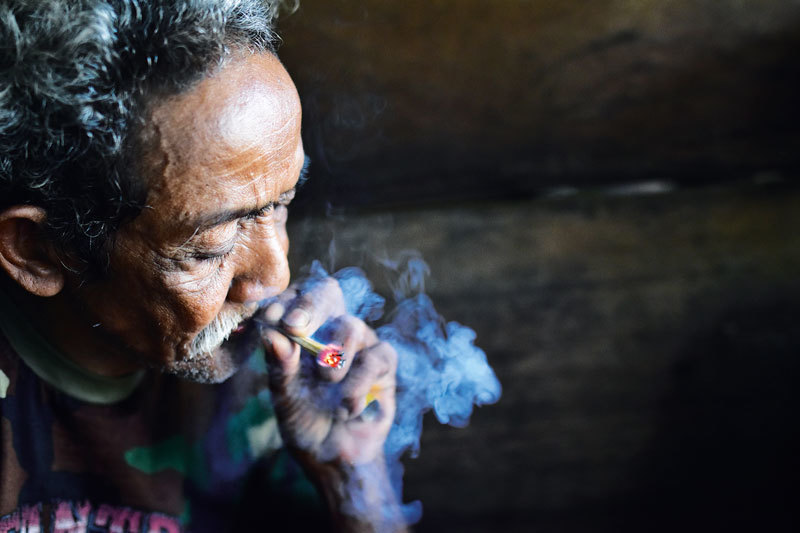
The forest was cool and dense, and we created a lot of noise as Yonatan slashed back a line of thorny rattan to make a trail. My immediate thought was “wrong clothes”, and I wished I had worn long pants. It was a hot, humid day and so we were lucky to be under a thick canopy of pristine rainforest for the first hour.
We then crisscrossed our way through patches of forest, savannah and swamp. Somehow I managed to ignore an enormous green tree snake hanging just over my head on a low branch. Yonatan pointed it out after our group had passed, and it made me wonder what other creatures were lurking, camouflaged, around us. I did a short, speedy shuffle past the others and caught up with Yonatan, who was still leading the way. I wanted to make sure that, if there were any more surprises in store, I would be at his side.
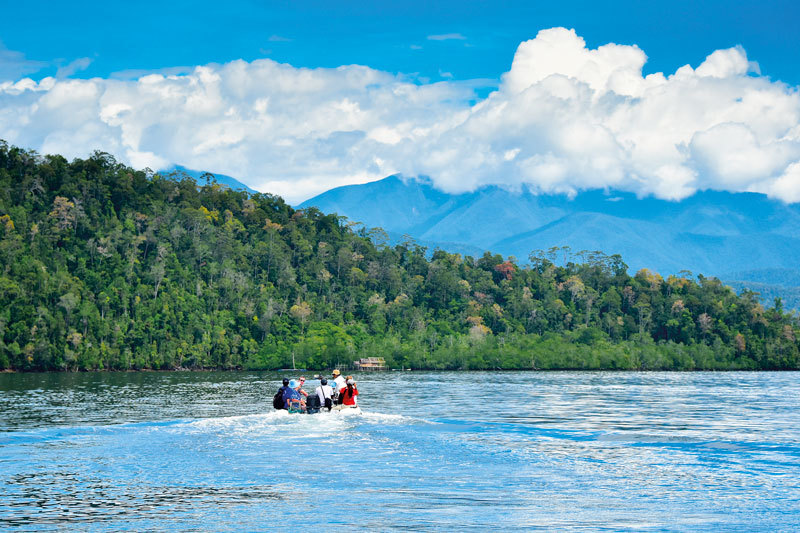
After six kilometres of trekking, we came upon a long, neat straight fence. After hopping over the fence, we came to some cornfields and then to a series of dry rice fields. “We are very close,“ said Yonatan excitedly, “Look through the trees”. And then I caught my first glimpse of a row of wooden tribal Wana houses.
The village was comprised of a series of functional planked houses. The settlement was very ordered and tidy. By comparison, I felt and looked very bedraggled and untidy after my forest trek. I was displaying a wonderful pattern of rattan scratches all over my legs and made another ‘note to self’ to always travel with a sarong, as it’s respectful to wear traditional dress when visiting the homes of tribal people.

We were greeted with big warm smiles from the group of elders who were gathered at the main house. They seemed to be just as fascinated by us as we were by them. They invited us into the house, which included several sleeping rooms and a main communal area with a large traditional fireplace. In the corner of the main area, water was stored in long bamboo tubes. We could smell grilled fish. “We are great fisherman,” said one of the elders, “Only one hour from here there is a lake where we catch snapper and eel”.
An assortment of fish traps, nets, baskets and wooden spear guns lay in a neat stack against the wall. The tools and hunting gear were rudimentary, but highly functional. One of the elders produced a sacred gong and proudly showed it to us. After we had marvelled at it, he sounded it once and returned it to its spot next to a chainsaw. The chainsaw and one satellite dish were the only signs of modern life.
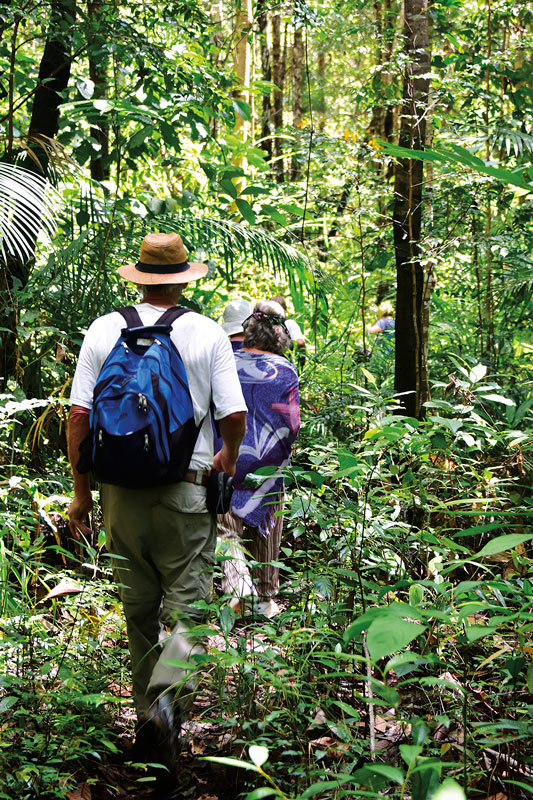
“We get our medicine from the forest,” a Wana elder told us, as we settled on hand-woven leaf floor mats in a circle with our hosts. “Every Wana village has a dukan, who safeguards our ancient knowledge. We follow shamanist ways and practise ancestral worship. Our way of life is strong and does not change. The Government leaves us alone to live the way we want.” He added, with a wry smile, “They do like to collect data on us though, like births and deaths. However, we are hard to catch because we pack up and move regularly”.
I watched with fascination as another Wana elder, a woman of about 80, rolled tree bark around a wad of tobacco. She shaped it into a perfect cigarette in less than a minute while her husband, a jovial, talkative character, explained about life in the forest. “In the old days we were entirely nomadic, but now we settle in an area for around three to four years. We burn and clear a patch of land and grow our crops. When the soil is depleted, we pack up our plank houses and move on so it can regenerate. As forest dwellers, we have the deepest respect for the earth. We take only what we need,” he said.

Yonatan explained how this practice of forest management is called swidden and is a shifting agricultural system which has served the Wana people well and preserved their forests for centuries.
“Here, have a look at this,” the chief said, handing me a blowpipe. “We are great hunters.” He showed me his range of darts, pointing out the ones which were loaded with poison.
The village comprised of nineteen families. We felt so incredibly honoured to sit with the elders and exchange stories with them. When it was time to take our leave, no one wanted to go. Sadly, our boat had a fixed itinerary. Of course, they invited us to stay overnight in the village, but we had to decline.
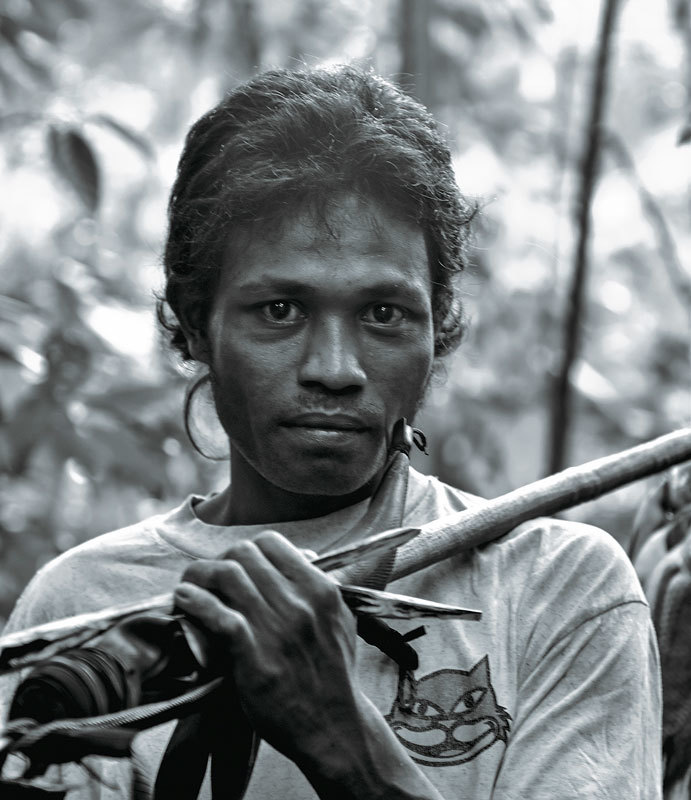
The Wana’s world seemed timeless and the luxury of our ship anchored out in the sea seemed very distant as, with some hesitation and many repeated goodbyes, we took our leave. We walked back to the boat along the trail, mostly in silence, lost in contemplation and reflection.
As I snuggled down under crisp white sheets in my teak wooden cabin, back on the Ombak Putih, I drifted off to another time and place pondering on the simplicity of the Wana. These traditional land dwelling people of Morowali National Park are true conservationists. Retaining their customs and tribal ways and roaming the forests of Sulawesi, they are a fine example of Indonesia’s rich living cultural diversity.
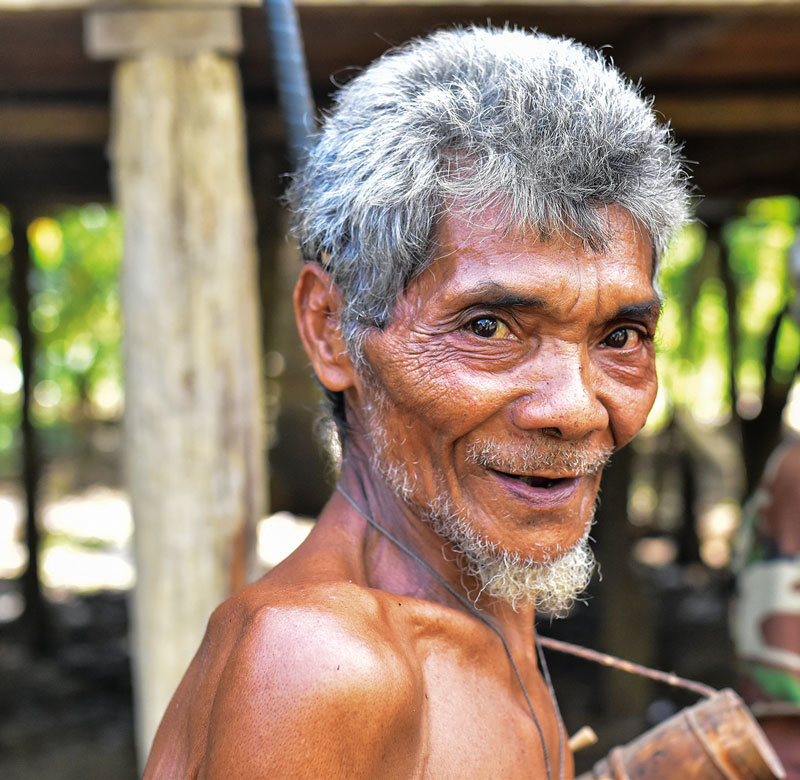
Facts File:
The Morowali National Park is located on the eastern arm of Central Sulawesi. Established in 1980, this protected forest area contains a large intact primary forest. Towering mountains reach heights of 2600 metres, and within the park, there are natural lakes and swamp forests. 600 Wana families who follow their traditional lifestyle live in harmony with the land in Morowali National Park.
Accessing Morowali National Park
By Air and Boat: Fly to Ternate. Join a Seatrek Sailing Adventure – Spice Traders Sailing Adventure from Ternate – Kendari. This itinerary includes a trip to the Wana People, Morowali National Park.
By Air/Land: Fly to Palu, Central Sulawesi. Take an 11-hour drive to Beteleme. The next day is a 30-minute drive to Kolonedale. Transfer by motorboat to Morowali National Park via a 2-hour crossing of Tolo Bay. The next day trek for 4 hours to reach Marissa. Stay overnight with the Chief of the Wana Tribe at Marissa. Explore the area from here.
T: Pak Vasko +62 813 565 78409
Whats App +62 813 565 78409
Email: info@joenjo-tours.com
Stephanie Brookes is a travel writer and blogger with tales from Indonesia and beyond. Please see
www.travelwriter.ws
http://www.facebook.com/stephtravelwriter
www.instagram.com/stephtravelwriter
David Metcalf runs photography and cultural tours in Java, Bali, India, Myanmar and USA. David operates Taksu Photo Gallery in Ubud, Bali. By taking a workshop or tour with David you help support education and health programs in Bali and Kalimantan.
www.davidmetcalfphotography.com
www.taksuphotogallery.com
www.instagram.com/davidmetcalfphotography







